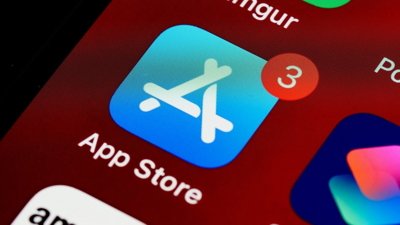After years of resisting the trend of larger phones, Apple has now fully embraced two-handed smartphone use with the iPhone X, as the device apparently lacks Reachability — a feature first introduced three years ago with the iPhone 6.
When the iPhone 5 launched in 2012, it marked the first time that Apple expanded the screen size of its smartphone, going from 3.5 inches to 4. To justify the change, Apple made a commercial narrated by Jeff Daniels, showcasing how an average person's thumb could reach all four corners of the device when being used one handed.
The commercial concluded by calling the design of the iPhone 5 "a dazzling display of common sense."
At the time, larger smartphones running Android were flooding the market, and gaining some popularity, as some users showed a preference for large displays that could show more content.
The 4-inch display eventually gave way to not one but two larger handsets in 2014: the iPhone 6 and iPhone 6 Plus. Not coincidentally, the iPhone 6 series also represented tremendous growth for Apple, as consumers who had been waiting for a big-screen iPhone finally got their wish.
Still, Apple didn't want to abandon its dedication to one-handed use, and so alongside the iPhone 6 came a new feature dubbed "Reachability," which brings the top of the display down to a more manageable area for a thumb to reach. To invoke this, users tap — but do not press — the home button twice, allowing for a single touch on the screen before automatically re-expanding to full-size.
But the new iPhone X doesn't have a physical home button, and according to iOS 11 digging by developer Guilherme Rambo, there is not currently any support for Reachability on the new hardware.
Reachability is not supported on iPhone X pic.twitter.com/vvclAXMr2J
— Guilherme Rambo (@_inside) September 13, 2017
While that could change ahead of launch, other tweaks to iOS suggest one-handed use is no longer a priority.
The iPhone X also utilizes a new gesture to multitask and return to the home screen, requiring users to swipe up from the bottom of the screen. This means that Control Center is no longer accessed from the bottom of the screen with the iPhone X.
Instead, users must swipe down from the upper right "notch" corner on the display to access Control Center. For users who use Control Center for quick actions like HomeKit controls, flashlight, media playback and more, the radical design change of the iPhone X will force a change in habit.
Further, the one-handed use changes don't just affect the iPhone X. Using Reachability on a Plus-sized iPhone running the golden master of iOS 11, users cannot swipe down from the top of the display to invoke Notification Center.
Interestingly, iOS 11 does offer one concession for one-handed users: A new one-handed keyboard option that makes it easier to type by cramming the virtual keys onto one side of the device.
The market has shown that users prefer bigger phone screens, and the iPhone X satisfies that trend with the largest iPhone screen ever, measuring 5.8 inches diagonally.
For those who prefer one-handed use occasionally, or basically require it for accessibility reasons, the iPhone 8 and iPhone 8 Plus are still available. Apple even continues to sell the legacy iPhone 7 and iPhone 6s series models. And the iPhone SE offers a no-compromises one-handed experience for users who consider that a must-have.
But the debut of the iPhone X might be an indication that Apple's catering to one-handed iPhone use is a thing of the past.
 Neil Hughes
Neil Hughes









-m.jpg)






 Malcolm Owen
Malcolm Owen
 William Gallagher
William Gallagher
 Andrew O'Hara
Andrew O'Hara

 Sponsored Content
Sponsored Content
 Charles Martin
Charles Martin










31 Comments
The best part of the 2:1 phones is you can actually hold it with one hand (for those with small to medium sized hands). Phones like the Galaxy S8, LG V30, etc. all require this tradeoff, so it's not like Apple is at a disadvantage compared to the others here.
EDIT:
Actually, turns out the Galaxy does have a one handed mode. Even then, I don't think this is a problem for Apple.
https://www.youtube.com/watch?v=xAiK8qmLDsk
The iPhone 6/7 doesn't support reachability – only the iPhone 6/7 Plus. The iPhone X has a larger screen, but is roughly the same size of iPhone 6/7. Also, you don't have a home button to double tap to use it so...
I think it’s silly to single out iPhone X as two-handed because of the lack of reachability. It’s obvious that the lack of home button is the real reason behind this omission.